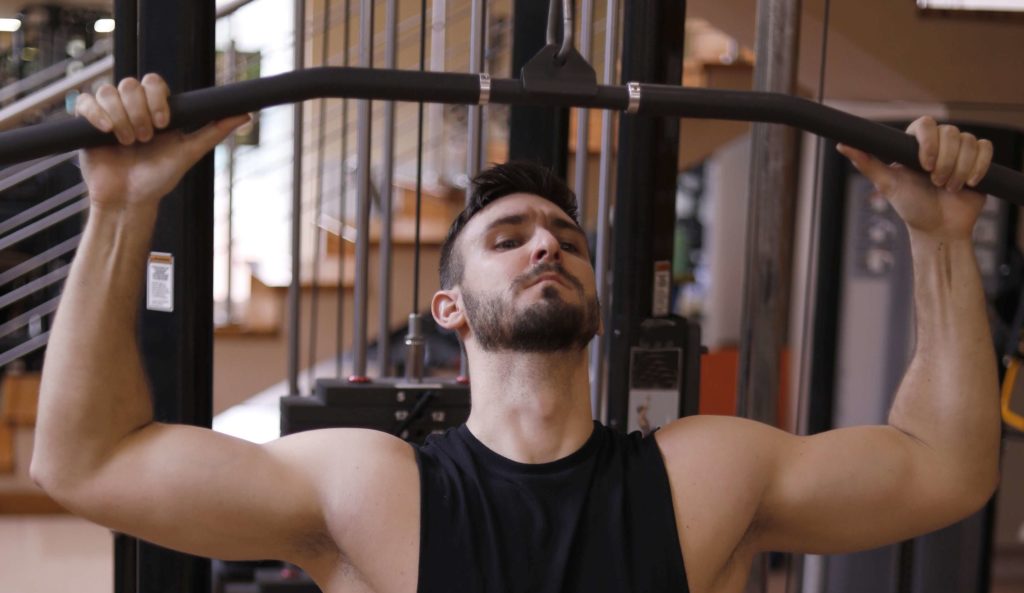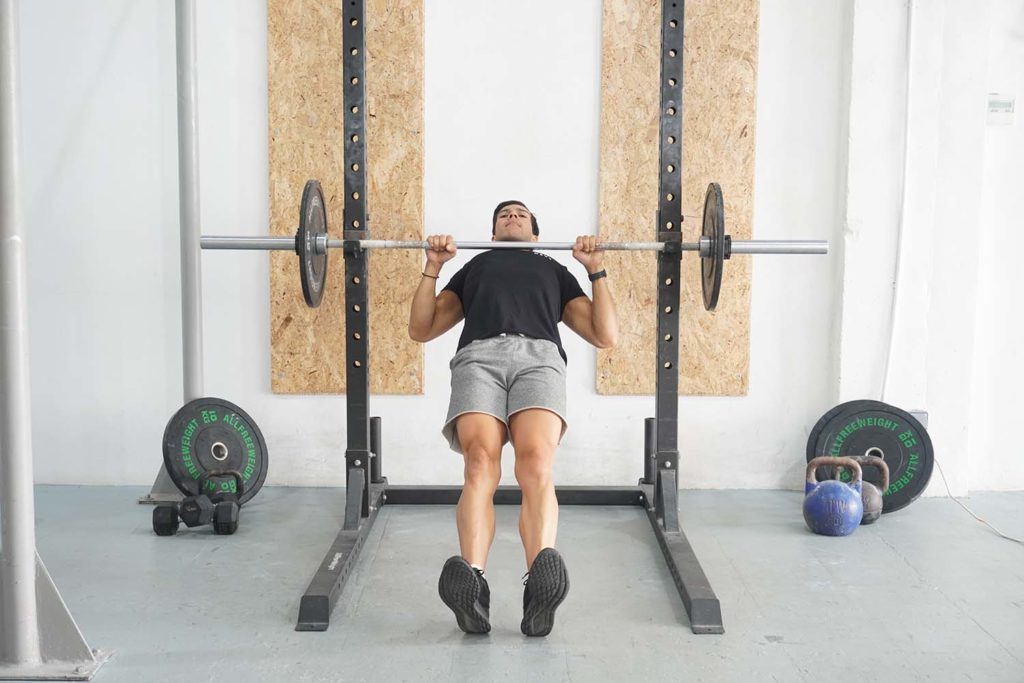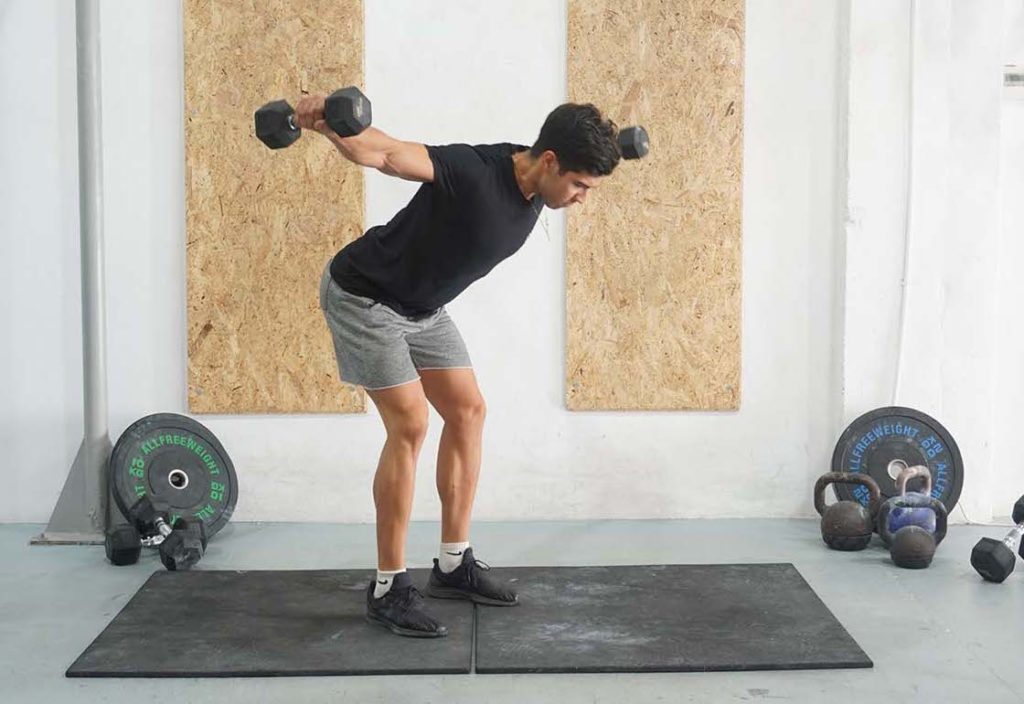Benefits of the Face Pull
A once unknown exercise, the face pull has quickly transformed into one of the most popular movements for rear deltoid development. Unlike many popular activities, the face pull differs because of its sheer simplicity.
All you need is a cable station with a rope attachment or a simple resistance band. The goal is to grab the band or rope, square your shoulders, flare your elbows, and pull toward your face.
The face pull is one of the best exercises trainees should do to maintain shoulder health and prevent poor posture. Face pulls offer a fantastic range of motion and emphasizes our posterior shoulder heads thanks to the high elbow position. Plus, the movement’s overloading potential is excellent, though it’s best to use light loads for 20 or more repetitions per set.
How to do a Face Pull

- Select the load on the cable machine. Start with no more than 20 to 25 pounds.
- Attach a rope in the high position of the cable machine.
- Grab the rope with both hands and have your thumbs facing the ceiling.
- With your arms straight, take a step back to lift the weight off its stack.
- Bring your chest out and shoulder blades back.
- Engage your abs, stagger your stance, and lean back slightly for balance.
- Take a breath and pull the rope toward your face. Pull and split the rope so your hands end up on either side of your head. Your elbows should be at shoulder level.
- Hold the top position for a moment, engaging your rear deltoids as best as possible.
- Release the rope slowly and exhale.
- Take another breath and repeat.
What muscles does the face pull activate?
The primary muscles that work during a face pull are the middle and rear deltoids. Our rear deltoids assist with shoulder retraction and rotation. The posterior deltoids activate well thanks to their two-fold function (retraction and pulling), leading to remarkable growth. Similarly, the middle delts contribute to the movement and provide shoulder stability.
Face pulls are also great for training the rhomboids, infraspinatus, and trapezius. These muscles contribute to shoulder retraction and help us pull the rope toward our face. The only downside is that face pulls can’t activate our upper back muscles that well since we use much less weight. The face pull also works our biceps and brachioradialis, both of which contribute to elbow flexion.
How to perform face pulls at home without a machine?
The best place to do face pulls is a cable machine because of the overloading potential, constant tension, and ability to change the pulling angle. The good news is that you can also do face pulls at home, even if you don’t have a machine.
Resistance bands are a fantastic option for doing face pulls at home. First, bands come in various tension levels, allowing you to pick the one that best fits your strength level (1).
You can start with a thin band and gradually increase the tension as you build up your upper back, rear deltoids, and biceps. Second, you can easily attach the band somewhere above your head. A resistance band door anchor works well.
Training with resistance bands is also beneficial because of their linear variable resistance (LVR). The more you lengthen a band, the more tension it provides, preventing momentum and forcing you to use good technique.
Plus, the band forces you to contract your rear deltoids and upper back muscles maximally to complete each repetition. As far as technique goes, you should follow the same instructions as you would for a cable station.
Variations and Modifications of the Face Pull
1. Face Pulls with Palms Facing Down
The traditional way to do face pulls is with a neutral grip and thumbs facing the ceiling. But you can change your grip and have your palms face the floor. Doing so isn’t much different, but it might help you feel your rear deltoids better. Experiment to see which grip fits you best.
2. Pause Face Pulls
As with most exercises, adding a brief pause at the top is a great way to make each repetition more challenging and activate your muscles better. Instead of pulling and releasing the weight immediately, hold the contraction for one to three seconds.
3. Face Pulls with a Resistance Band
Doing face pulls with a resistance band offers some distinct advantages. As discussed above, resistance bands provide linear variable resistance (LVR). The more you stretch it, the more tension it has. So, your muscles have to contract maximally for you to complete each repetition.
Mistakes to Avoid
A common mistake related to face pulls is allowing your shoulders to roll forward. For example, you pull the weight correctly but allow your upper back to round when you release the rope. The mistake isn’t necessarily harmful, but it forces you to reset your posture for each repetition, wasting time and energy. Instead, you should bring your shoulders back and keep them in that position for the duration of each set.
Another mistake related to face pulls is lifting too much weight. Doing so prevents you from using proper form. You end up jerking the rope and using too much momentum, which removes the tension from your rear deltoids.
Avoid the mistake by treating the face pull as an isolation movement. Use a light enough weight so that you can do at least 15 to 20 smooth repetitions with a full range of motion.
The third significant mistake related to face pulls is not doing the exercise altogether. Many people scoff at the idea of rear delt training, claiming the muscle receives enough attention when training the back. But the truth is, our rear deltoids benefit from direct work like any other muscle group. Plus, face pulls are essential for shoulder health and posture.
Similar Exercises to the Face Pull
Lat Pulldown (Cable)

The lat pulldown on a cable machine is an effective exercise to strengthen the upper back and build our lats (2). Like face pulls, lat pulldowns work many of the same muscles through a similar range of motion.
Inverted Row

The inverted row is a bodyweight exercise that strengthens your core, upper back, and biceps. You have to hold onto a bar (for example, on a Smith machine), position your torso in a horizontal position, and pull yourself repeatedly.
Bent Over Fly (Dumbbell)

The bent-over reverse fly is an isolation exercise for the rear deltoids (3). Similar to face pulls, the goal with the movement is to use a light enough weight so that you can do at least 15 to 20 repetitions with proper form. Bent-over reverse flyes are a fantastic alternative to the face pull because you need a pair of light dumbbells, the range of motion is good, and you isolate your rear deltoids.

